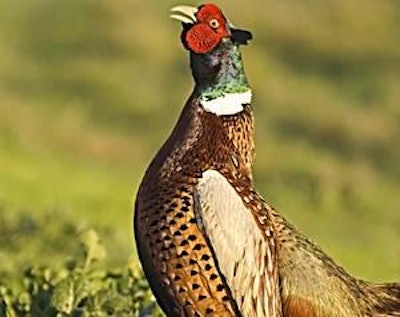
Mycoplasmosis is the most costly disease of domestic birds worldwide. In the UK, the disease, often known as ‘Bulgy Eye’ disease in the game keeper community, is one of the most economically important diseases of game birds.
Mycoplasmosis is most often seen in adult birds, although all ages may be affected and increased mortality in seven to 14 day old chicks can be devastating to game farmers.
Typically, outbreaks of Mycoplasma infection are associated with slow onset chronic respiratory signs which include severe sinusitis, sneezing, conjunctivitis, watery eyes, nasal discharge, poor productivity, slow growth and a marked reluctance to move. Co-infections with other respiratory viruses and bacteria are also common and can increase disease severity.
Diagnosis
Swabs are taken for diagnosis, and confirmation of infection uses a variety of techniques including blood serology testing. Modern DNA-based PCR techniques can provide a rapid confirmation of diagnosis if it is urgent to determine the flock status.
Prevention by biosecurity and management
Eradication of this infection has been the central objective of official poultry health programmes in many countries, therefore Mycoplasma gallisepticum infection status is important for trade in birds, hatching eggs and chicks.
These programmes are based on purchase of uninfected chicks, all-in/all-out production, biosecurity, and routine serological monitoring. In the case of known infected flocks, preventative medication is usually beneficial.
Vaccines, none of which are licensed for use in pheasants, using live attenuated or naturally mild strains are used in some countries and may be helpful in gradually displacing field strains on multi-age sites. However, productivity in challenged and vaccinated birds are not as productive as those in Mycoplasma-free stock.
Good management techniques, avoiding stress and overcrowding are most important factors for keeping birds healthy and disease-free.
Treatment
Various antibiotics have been used for treatment of Mycoplasma infections including tylosin, tiamulin, tetracyclines, lincomycin-spectinomycin but none of these are licensed specifically for use in pheasants or game birds. Last year, however, tylvalosin received a EU marketing authorisation through the European Medicines Agency (EMA) and is the only fully EMA licensed product for the treatment for Mycoplasma gallisepticum in pheasants.
Mycoplasmosis can be spread both via the egg and through direct contact with infected birds, commercial or wild. It can have a serious effect on egg production and productivity. If infection levels in breeding birds are reduced at the start of the season it will help minimise the levels of infection transmitted via the eggs and through direct contact.
The breeding and rearing seasons are among the most stressful times of year for pheasants and as a consequence it is at these times that the birds are most vulnerable. Reduction of stress through sound management practices will help reduce the levels of Mycoplasma infection.

















